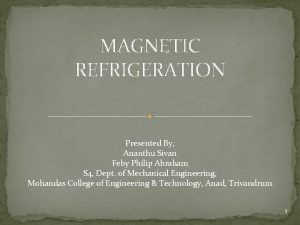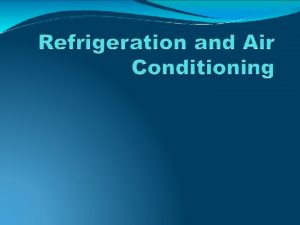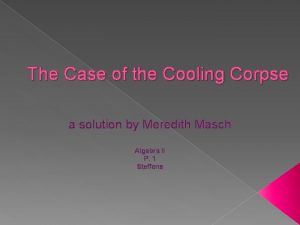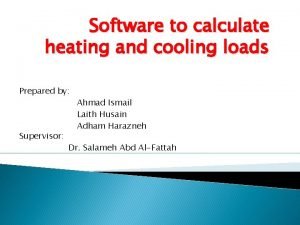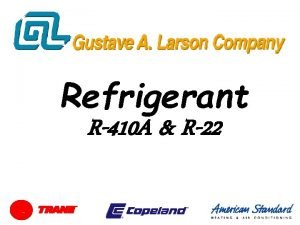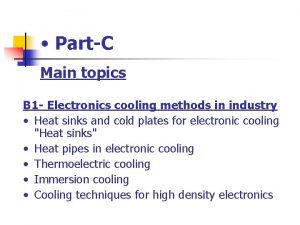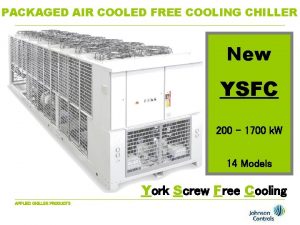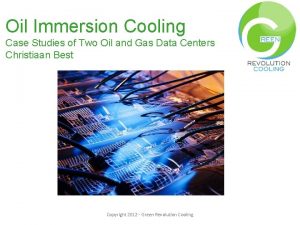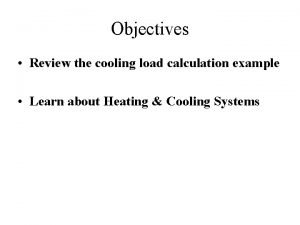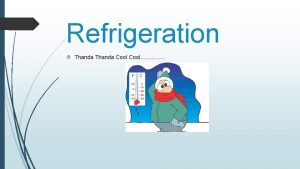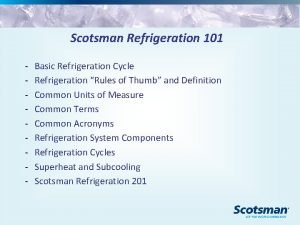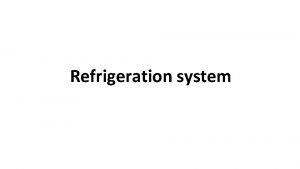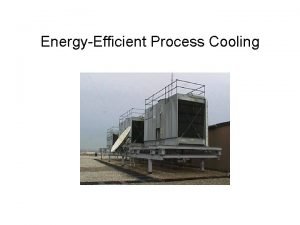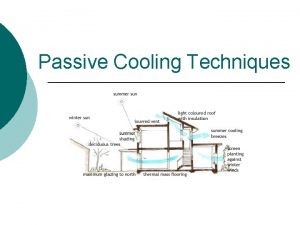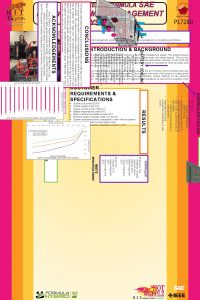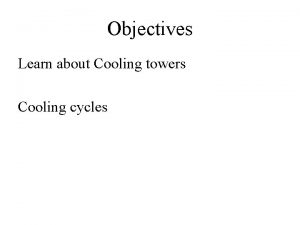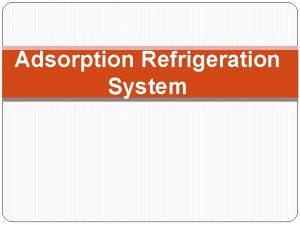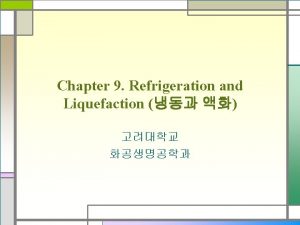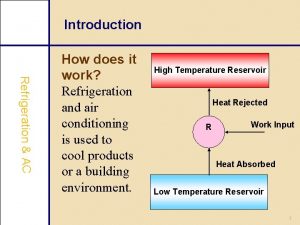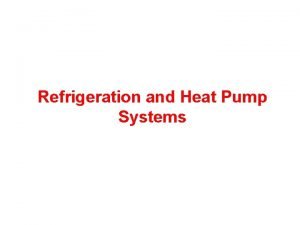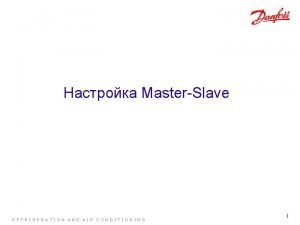MAGNETIC REFRIGERATION INTRODUCTION Magnetic refrigeration is a cooling















- Slides: 15

MAGNETIC REFRIGERATION

INTRODUCTION �Magnetic refrigeration is a cooling technology based on the magneto caloric effect. �Invented by Emil Warburg in 1880 �Used to attain cryogenic temperatures well below 1 o K with the help of magnetic fields

PRINCIPLE OF MAGNETIC REFRIGERATION �Magneto caloric effect is the basic principle on which the cooling is achieved. �Magneto caloric effect is a magneto-thermodynamic phenomenon in which a reversible change in temperature of a suitable material is caused by exposing the material to a changing magnetic field. �This is called adiabatic demagnetisation.

THERMODYNAMIC CYCLE

STEPS OF THERMODYNAMIC CYCLE �Adiabatic magnetisation �Isomagnetic enthalpic transfer �Adiabatic demagnetization �Isomagnetic entropic transfer

REQUIREMENTS FOR PRACTICAL APPLICATIONS �Magnetic Materials �Regenerators �Super Conducting Magnets �Active Magnetic Regenerators(AMR’s)

MAGNETIC MATERIALS �Magnetocaloric effect is an intrinsic property of a substance �Gadolinium and its alloys are the best materials available for magnetic refrigeration � They can reach ultra low temperatures

REGENERATORS �Efficient heat transfer requires large surface areas offered by porous materials �When these porous materials are used in refrigerators they are referred to as regenerators


SUPER CONDUCTING MAGNETS �The magnetic field is created by superconducting magnets � Most practical magnetic refrigerators are based on super conducting magnets operating at cryogenic temperatures �Commonly used is made of a Niobium-Titanium alloy

ACTIVE MAGNETIC REGENERATORS �A regenerator that undergoes cyclic heat transfer operations and magneto caloric effect is called Active Magnetic Regenerator �It should be designed to possess: high heat transfer rate high magneto calorific effect affordable materials ease of manufacture

APPLICATIONS �Liquefaction purposes in the case of hydrogen, nitrogen and helium �Also focuses on many future applications like magnetic household refrigeration, cooling in transportation, cooling electronic circuits etc.

MERITS �High efficiency �Reduced operating cost �Reliability

CONCLUSIONS �Magnetic refrigeration is a technology that has proven to be environmentally safe �In order to make the Magnetic Refrigerator commercially viable, scientists need to know how to achieve larger temperature swings and also permanent magnets which can produce strong magnetic fields of order 10 tesla �There are still some thermal and magnetic hysteresis problems to be solved for the materials that exhibit the MCE to become really useful

THANK YOU
 Magnetic refrigeration
Magnetic refrigeration Introduction of refrigeration system
Introduction of refrigeration system The coercive force in a ferromagnetic material is
The coercive force in a ferromagnetic material is Weber magnetic
Weber magnetic Magnetic moment and magnetic field relation
Magnetic moment and magnetic field relation Magnetic field and magnetic force
Magnetic field and magnetic force Who killed dr dedman answer key
Who killed dr dedman answer key Liz owns stock in nar heating/cooling
Liz owns stock in nar heating/cooling Air conditioning heat load calculation software
Air conditioning heat load calculation software R410a temperature pressure chart
R410a temperature pressure chart Electronic cooling methods
Electronic cooling methods Uniflair chiller
Uniflair chiller Immersion cooling case
Immersion cooling case Ocp liquid cooling
Ocp liquid cooling Cooling load calculation example
Cooling load calculation example Lubrication and cooling system
Lubrication and cooling system
